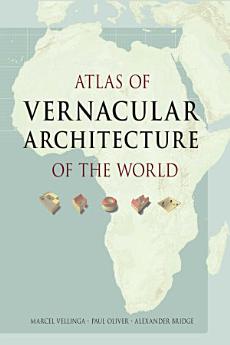Atlas of Vernacular Architecture of the World
About this ebook
Mapping such diverse aspects as materials and resources, technologies, structural systems, symbolism, forms and service systems on a cross-cultural and comparative basis, the Atlas of Vernacular Architecture of the World reveals the distribution, diversity and relationships of the world’s vernacular building traditions. Indicating geographical patterns, developments, lacunae and anomalies, it gives rise to new insights and understandings, stimulating new hypotheses, questions and research efforts.
Augmenting the award-winning Encyclopedia of Vernacular Architecture of the World, the Atlas of Vernacular Architecture of the World constitutes a unique and unparalleled resource for anyone involved in the growing field of vernacular architecture studies, including architects, geographers, art historians, planners, folklorists, conservationists, builders, and anthropologists as well as being of use to all those working in the fields of heritage conservation, architecture, regeneration, energy efficient building, resources management, development and sustainability.
About the author
Marcel Vellinga is Director of the International Vernacular Architecture Unit at Oxford Brookes University. He is the author of Constituting Unity and Difference: Vernacular Architecture in a Minangkabau Village (2004) and co-editor of Vernacular Architecture in the 21st Century: Theory, Education and Practice. He has published various articles dealing with the anthropology of architecture, vernacular architecture and sustainable development.
Paul Oliver is a Visiting Professor at the International Vernacular Architecture Unit at Oxford Brookes University. He is the author of numerous books and articles on vernacular architecture, including, most recently, Built to Meet Needs: Cultural Issues in Vernacular Architecture (2006) and Dwellings: The Vernacular House World Wide (2003). He is the editor of the award-winning Encyclopedia of Vernacular Architecture of the World (1997).
Alexander Bridge is a cartographic designer and a graphic artist. Originally working purely in graphic design, he went on to qualify as a mountain leader where a fascination for maps was developed into a deep understanding. Upon completion of an honours degree in cartography, Alexander was presented with the award for outstanding performance by a student at higher level by the British Cartographic Society.







